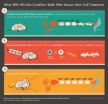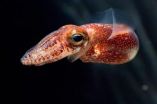(Press-News.org) (SALT LAKE CITY) - Mice severely disabled by a condition similar to multiple sclerosis (MS) were able to walk less than two weeks following treatment with human neural stem cells. The finding, which uncovers potential new avenues for treating MS, will be published online on May 15, 2014, in the journal Stem Cell Reports.
In striking contrast to active, healthy mice, those with an MS-like condition must be fed by hand because they cannot stand long enough to eat and drink on their own. When scientists transplanted human neural stem cells into the MS mice, they expected no benefit from the treatment. They thought the mice would reject the cells, much like rejection of an organ transplant.
What was to be a routine experiment instead yielded spectacular results on the first try.
“My postdoctoral fellow Dr. Lu Chen came to me and said, ‘The mice are walking.’ I didn’t believe her,” said co-senior author, Tom Lane, Ph.D., a professor of pathology at the University of Utah. He began the study with co-first author Chen at the University of California, Irvine.
Within a remarkably short period of time, 10 to 14 days, the mice had regained motor skills. Six months later, they showed no signs of slowing down.
“This result opens up a whole new area of research for us to figure out why it worked,” remarked Jeanne Loring, Ph.D., co-senior author and director of the Center for Regenerative Medicine at The Scripps Research Institute in La Jolla, Calif. “We’ve long forgotten our original plan.”
More than 2.3 million people worldwide have MS, a disease in which the immune system attacks myelin, an insulation layer surrounding nerve fibers. The resulting damage inhibits transmission of nerve impulses, producing a wide array of symptoms including difficulty walking, impaired vision, fatigue and pain.
Current FDA-approved medications slow early forms of the disease by dampening attacks by the immune system. In recent years, scientists have turned their attention to searching for ways to halt or reverse MS. Such a discovery could help patients with latter, or progressive, stages of the disease, for whom there are no treatments.
Results from the study demonstrate the mice experience at least a partial reversal of symptoms. Immune attacks are blunted, and the damaged myelin is repaired, explaining their dramatic recovery.
“The way we made the neural stem cells turns out to be important,” said Loring, describing the reason behind the novel outcome.
Prior to transplantation, Loring’s graduate student and co-first author on the publication, Ronald Coleman, followed his intuition and grew the cells so they were less crowded on the Petri dish than usual. The change in protocol yielded a human neural stem cell type that turned out to be extremely potent. The experiments have since been successfully repeated with cells produced under the same conditions, but by different laboratories.
Counterintuitively, Lane and Loring’s original prediction that the stem cells would be rejected from the mice, came true. As early as one week post-treatment, there were no signs of the transplanted stem cells in the mouse. In this case, what would ordinarily be considered a handicap, turns out to be a significant advantage.
The human neural stem cells send chemical signals that instruct the mouse’s own cells to repair the damage caused by MS. Experiments by Lane’s team suggest that TGF-beta proteins comprise one type of signal, but there are likely others. This realization has important implications for translating the work to clinical trials in the future.
“Rather than having to engraft stem cells into a patient, which can be challenging from a medical standpoint, we might be able to develop a drug that can be used to deliver the therapy much more easily,” said Lane.
With clinical trials as the long-term goal, the next steps are to assess the durability and safety of the stem cell therapy in mice.
“We want to try to move as quickly and carefully as possible,” Lane continued. “I would love to see something that could promote repair and ease the burden that patients with MS have.”
INFORMATION:
Listen to an interview with Tom Lane about his research on The Scope Radio
http://healthcare.utah.edu/the-scope/shows.php?shows=0_lkg4ebnt
The research was funded by the National Multiple Sclerosis Society and the California Institute of Regenerative Medicine.
In addition to Lane, Loring, Chen, and Coleman, the other authors on the publication are Ronika Leang, Alexandra Kopf, Craig Walsh, and Oswald Steward (UC Irvine), Ilse Sears-Kraxberger (TSRI), and Wendy B. Macklin (University of Colorado, Aurora). END
Mice with MS-like condition walk again after human stem cell treatment
2014-05-15
ELSE PRESS RELEASES FROM THIS DATE:
Not just a pretty face, although that helps female politicians on election day
2014-05-15
Female politicians' success can be predicted by their facial features, especially in conservative states where women with more feminine faces tend to do better at the ballot box, a Dartmouth College-led study finds.
The results don't mean a supermodel will win the White House, but they do suggest women's electoral success requires a delicate balance between voters' perception of traditional femininity and political competence. The study appears in the journal Social Psychological and Personality Science. A PDF of the study is available on request. Here is a video animation ...
Stem cell therapy shows promise for MS in mouse model
2014-05-15
LA JOLLA, CA—May 15, 2014—Mice crippled by an autoimmune disease similar to multiple sclerosis (MS) regained the ability to walk and run after a team of researchers led by scientists at The Scripps Research Institute (TSRI), University of Utah and University of California (UC), Irvine implanted human stem cells into their injured spinal cords.
Remarkably, the mice recovered even after their bodies rejected the human stem cells. "When we implanted the human cells into mice that were paralyzed, they got up and started walking a couple of weeks later, and they completely ...
Genetic tracking identifies cancer stem cells in human patients
2014-05-15
The gene mutations driving cancer have been tracked for the first time in patients back to a distinct set of cells at the root of cancer – cancer stem cells.
The international research team, led by scientists at the University of Oxford and the Karolinska Institutet in Sweden, studied a group of patients with myelodysplastic syndromes – a malignant blood condition which frequently develops into acute myeloid leukaemia.
The researchers say their findings, reported in the journal Cancer Cell, offer conclusive evidence for the existence of cancer stem cells.
The concept ...
Combination therapy a potential strategy for treating Niemann Pick disease
2014-05-15
CAMBRIDGE, Mass. (May 15, 2014) – By studying nerve and liver cells grown from patient-derived induced pluripotent stem cells (iPSCs), Whitehead Institute researchers have identified a potential dual-pronged approach to treating Niemann-Pick type C (NPC) disease, a rare but devastating genetic disorder.
According to the National Institutes of Health (NIH), approximately 1 in 150,000 children born are afflicted with NPC, the most common variant of Niemann-Pick. Children with NPC experience abnormal accumulation of cholesterol in their liver and nerve cells, leading to ...
'Bystander' chronic infections thwart development of immune cell memory
2014-05-15
PHILADELPHIA – Studies of vaccine programs in the developing world have revealed that individuals with chronic infections such as malaria and hepatitis tend to be less likely to develop the fullest possible immunity benefits from vaccines for unrelated illnesses. The underlying mechanisms for that impairment, however, are unclear, and distinguishing these so-called "bystander" effects on priming the immune system to fight future assaults versus development of immunological memory has been challenging.
A team from the Perelman School of Medicine at the University of Pennsylvania ...
E-cigarette awareness goes up, as (apparently) so does skepticism
2014-05-15
PHILADELPHIA (May 15, 2014) – Americans are unquestionably more aware of e-cigarettes, those vapor-emitting alternatives to tobacco cigarettes, according to a national survey. Yet, at the same time, the belief that e-cigarettes are safer than traditional smokes may be starting to diminish.
A national survey of 3,630 adults found that 77 percent of the respondents have heard of e-cigarettes; that's way up from 16 percent just five years ago. But the perception that e-cigarettes are actually less harmful than tobacco cigarettes among current smokers decreased slightly, ...
Protein sharpens salmonella needle for attack
2014-05-15
A tiny nanoscale syringe is Salmonella's weapon. Using this, the pathogen injects its molecular agents into the host cells and manipulates them to its own advantage. A team of scientists at the Biozentrum of the University of Basel demonstrate in their current publication in Cell Reports that a much investigated protein, which plays a role in Salmonella metabolism, is required to activate these needles and makes the replication and spread of Salmonella throughout the whole body possible.
The summer months are the prime time for Salmonella infections. Such an infection ...
The color of blood: Pigment helps stage symbiosis in squid
2014-05-15
MADISON, Wis. – The small but charismatic Hawaiian bobtail squid is known for its predator-fooling light organ.
To survive, the nocturnal cephalopod depends on a symbiotic association with a luminescent bacterium that gives it the ability to mimic moonlight on the surface of the ocean and, in the fashion of a Klingon cloaking device, deceive barracuda and other fish that would happily make a meal of the small creature.
The relationship between the squid and the bacterium Vibrio fischeri is well chronicled, but writing in the current issue of the journal Proceedings ...
Synthetic biology still in uncharted waters of public opinion
2014-05-15
The Synthetic Biology Project at the Woodrow Wilson International Center for Scholars is releasing the results of a new set of focus groups, which find continued low awareness of synthetic biology among the general public.
The focus groups also sought opinions on the emerging field of neural engineering.
The focus group results support the findings of a quantitative national poll conducted by Hart Research Associates in January 2013, which found just 23 percent of respondents reported they had heard a lot (6 percent) or some (17 percent) about synthetic biology.
The ...
Added benefit of the fixed combination of dapagliflozin and metformin is not proven
2014-05-15
The fixed combination of the drugs dapagliflozin and metformin (trade name: Xigduo) has been approved since January 2014 for adults with type 2 diabetes in whom diet and exercise do not provide adequate glycaemic control. In an early benefit assessment pursuant to the Act on the Reform of the Market for Medicinal Products (AMNOG), the German Institute for Quality and Efficiency in Health Care (IQWiG) now examined whether this new drug combination offers an added benefit over the appropriate comparator therapy. No such added benefit can be derived from the dossier, however, ...



